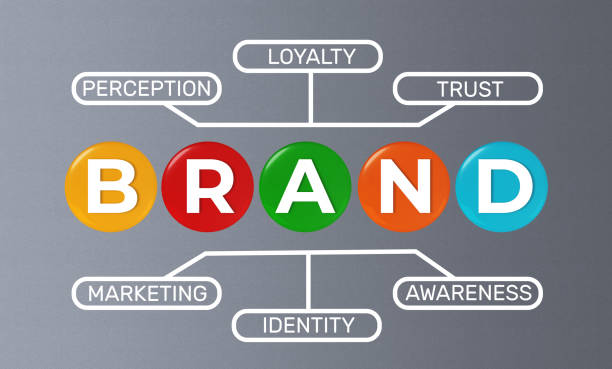Contents
- 1 Introduction
- 2 1. Understand your brand’s core values.
- 3 2. Develop Unique Value Proposition (UVP) Carin.
- 4 3. Write a brand mission and vision statement
- 5 4. Identify your target audience
- 6 5. Design elements of consistent branding
- 7 6. Develop a strong brand voice carrier.
- 8 7. Leverage brand storytelling
- 9 8. Creation of high quality content
- 10 9. Optimize your brand’s online presence
- 11 10. Customer Experience To Enhance Karin
- 12 11. Develop Brand Positioning Strategy Carin.
- 13 12. Effective brand management
- 14 13. Partnership and Cooperation
- 15 14. Regular Brand Audit
- 16 15. Brand Evolution and Adaptation
- 17 Conclusion
Introduction
Today we discuss Strong Brand Identity for Your Business Brand identity refers to any business that creates recognition and loyalty in its market. It’s not just a logo or a name, it’s a company’s vision, mission, and values. A strong brand identity not only increases customer trust and loyalty, but also gives you a distinct position in your market. In this article we will discuss how to create a strong brand identity for your business.
1. Understand your brand’s core values.

Every successful brand has certain core values that shape its mission and vision. Core values define what your brand values and what kind of customer experience it wants to deliver.
Your values define your brand personality and create an emotional connection with your target audience. Identifying your brand’s core values requires understanding your business objectives and customer needs.
2. Develop Unique Value Proposition (UVP) Carin.
A Unique Value Proposition (UVP) is the aspect of your brand that sets you apart from the competition. This is the characteristic that distinguishes your product or service in the market.
When developing a UVP analyze your competitors and see what unique features you have that appeal to customers. A UVP needs to be clear and concise so your audience can understand why you can provide a solution to their problem.
3. Write a brand mission and vision statement
Brand mission and vision statements outline your brand’s long-term goals and purpose. A mission statement explains why your business exists and how your day-to-day operations support our mission. A vision statement describes future goals and highlights the brand’s growth potential.
Your statements define the direction of your brand and are clearly understood by internal and external stakeholders.
4. Identify your target audience
Identifying your target audience is an important part of your brand identity. The target audience is the log who will benefit from your products or services.
By understanding their demographics, interests, and buying behavior, you can tailor your branding strategies to their preferences. Through market research and customer surveys, you can identify the specific needs and expectations of your audience.
5. Design elements of consistent branding
Consistent branding elements such as logos, color schemes, and typography visually represent your brand identity. When designing elements make sure to reflect your brand’s core values and UVP.
A logo can be easily recognized as long as it is simple and memorable. Color scheme and typography also dictate the personality and tone of your brand, so choose them carefully.
6. Develop a strong brand voice carrier.

Brand voice is your brand’s communication style, which is reflected in your messages and content. It expresses your brand personality and shapes the interaction with the audience.
Your brand voice can be friendly, professional, humorous, or authentic, but it should always be consistent. I will keep my target audience and brand values in mind when developing my brand voice.
7. Leverage brand storytelling
Brand storytelling is a powerful tool that helps connect your brand emotionally. A compelling brand story shares your brand’s journey, values, and mission and inspires consumers.
When crafting your brand story, make sure you’re authentic and relevant. Storytelling can give your brand a unique narrative that can carve out a special place in consumers’ hearts.
8. Creation of high quality content
High-quality content strengthens your brand identity and increases engagement with your audience. Content creation includes your blog posts, social media updates, and marketing materials.
Content must be informative, valuable, and engaging to highlight your brand’s expertise and credibility. Consistency in content quality and message reflects your brand’s professionalism.
9. Optimize your brand’s online presence
In today’s digital age, a brand’s online presence is crucial. Regularly update your website and social media platforms and ensure that Crane’s Woo reflects your brand identity accurately.
Utilize SEO (Search Engine Optimization) strategies to improve your website’s visibility and include relevant keywords. Social media platforms create a strong relationship with the audience by sharing equal and engaging content.
10. Customer Experience To Enhance Karin
Customer experience is an important aspect of brand identity that affects your brand reputation and loyalty. High-quality customer service and positive interactions improve your brand perception.
Ensure that your customer service team is trained to operate according to brand values and standards. Continuously enhance our services and actively listen to customer feedback.
11. Develop Brand Positioning Strategy Carin.
Brand positioning strategy helps to give your brand a specific position in the market. Your strategy defines how your brand should be perceived by your target audience. Analyze your competitors and market trends while developing your brand positioning. Positioning strategy clearly communicates your brand’s unique selling proposition to your audience.
12. Effective brand management
Effective brand management helps to maintain and enhance your brand identity. Brand management includes monitoring brand reputation, handling customer feedback, and ensuring brand consistency. Monitor your brand’s performance regularly and make adjustments as needed.
I will always keep my brand’s core values and identity in mind while implementing brand management strategies.
13. Partnership and Cooperation

Partnerships and collaborations can strengthen your brand identity and reach new audiences. By collaborating with relevant brands and influencers, you introduce your brand to new markets.
Make sure your brand values and goals are aligned as well. Effective collaboration can increase your brand’s credibility and visibility.
14. Regular Brand Audit
Regular brand audits are essential to assess and improve your brand identity. A brand audit evaluates your brand’s market position, consumer perception, and brand performance. An audit gives you the opportunity to identify your brand’s strengths and weaknesses. Based on the results of the audit, it is possible to update your branding strategy and tactics.
15. Brand Evolution and Adaptation
Brand identity must also evolve and adapt, as market trends and consumer preferences change over time. Consider market changes and consumer feedback to keep your brand identity relevant and up-to-date. Strategically plan brand evolution and ensure alignment with your core values and mission.
Conclusion
Strong Brand Identity for Your Business Building a strong brand identity is an ongoing process that requires constant effort and strategic planning. Focus on your brand’s core values, UVP, and customer experience and continually evolve your branding strategies.
A well-defined brand identity gives you a distinct position in the market and lays the foundation for long-term success. By managing and adopting your brand effectively, you ensure the growth of your business and customer loyalty.





